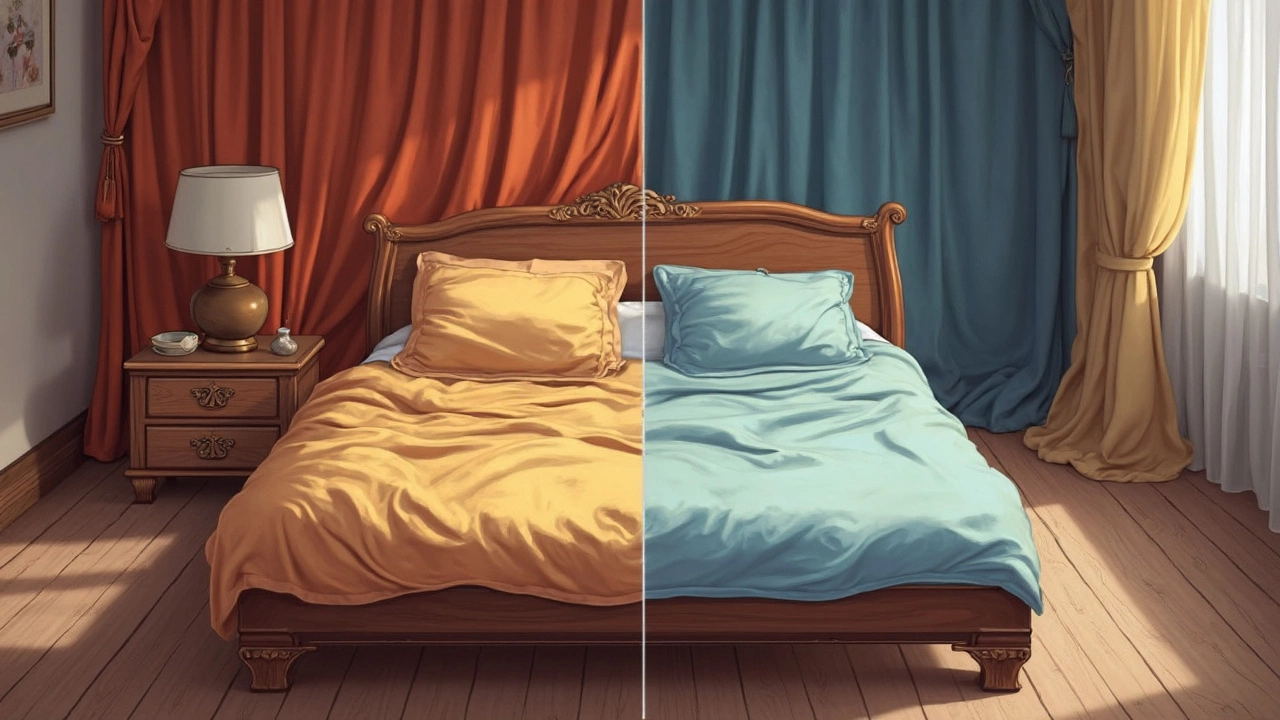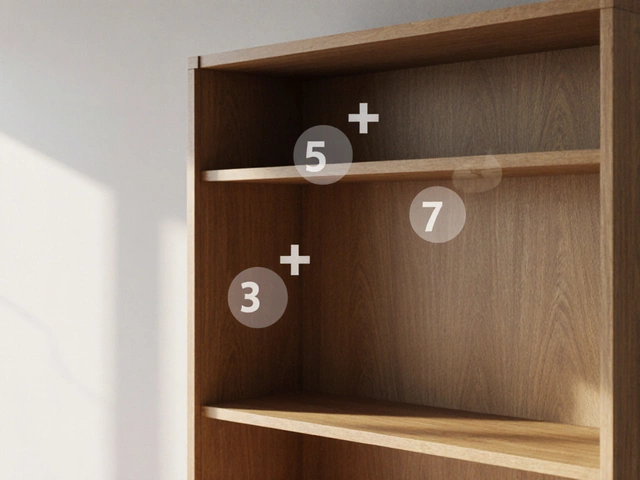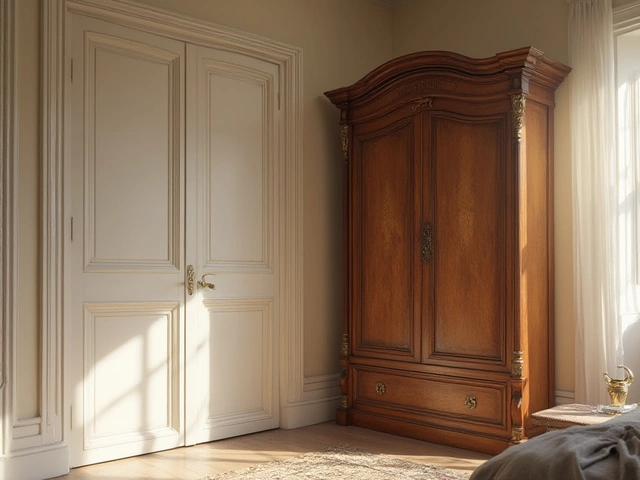So, you're thinking about swapping your regular bed for a futon. Maybe you're short on space, or maybe you love that minimalist vibe. Before making the leap, let's see what this shift could mean for your comfort and health.
Futons come with their own quirks and perks. On one side, they're space-saving champs, perfect for tiny apartments or multipurpose rooms. On the flip, though, how do they stack up for nightly shut-eye compared to a trusty mattress? Grab a coffee, and let's chat about it.
First off, let's tackle the obvious: what exactly is a futon, and why are folks giving it more than just a passing glance? Originating in Japan, traditional futons are a lot thinner than Western mattresses and are often rolled up and put away each morning. Modern takes vary, with thicker versions and cool convertible frames becoming pretty popular. If you're thinking convenience, futons definitely get the thumbs up.
Futon Basics
Alright, let's break down what a futon really is. Originating from Japan, futons started as simple, rollable floor mattresses. Traditional Japanese futons are compact and stored away during the day, freeing up living space. They typically consist of three parts: the mattress, a duvet, and a pillow. Modern futons, especially the ones you'll find in Western homes, have evolved.
In the U.S. and other Western countries, futons serve as both beds and couches. These versatile pieces often sit on a foldable wooden or metal frame. When you're set to sleep, you lay them flat. By day, fold them into a comfy sofa. Convenience is a huge selling point.
So, what makes a futon different from your average bed mattress? The secret sauce is in its design and materials. Most sofa beds use a foam mattress, which can vary in thickness. Some have innerspring coils for added support. Unlike a traditional bed, the support base isn't a box spring but a sturdy folding frame.
- Space Saving: Futons shine in small apartments or rooms that serve multiple purposes. Going from bed to couch in one quick move means you'll have more space to move around.
- Easy to Move: Moving a futon is generally easier than lugging a whole mattress and box spring. Great for people who move often—think college students or city dwellers.
You might be wondering, “Aren't futons less comfy than regular beds?” Well, they can be, but not always. Choose wisely, and you can find a futon that suits your nighttime needs without skimping on comfort.
Health Implications
When it comes to sleeping on a futon every night, your health can take a front-seat. So what exactly are we looking at here?
First off, consider back support. A decent Western mattress contours your body, while a traditional futon, being thinner, may not always offer the same support. This could lead to discomfort or exacerbate any existing back pain. If you've ever had a night where your back feels stiff or sore in the morning, you'll know how real this concern can be.
On the flip side of things, some folks swear by futons for back health, claiming that the firmer support can actually help with posture over time. So, if you're dealing with a bit of a slouch, the futon could be a surprise helper. But hey, everyone's body is different, right?
Allergies might be another factor to weigh in. Futon mattresses, especially those with natural fillings like cotton or wool, can be less likely to harbor dust mites compared to traditional mattresses. This is a huge win for people who battle allergies and want a cleaner sleep environment.
| Futon Type | Potential Benefit | Drawback |
|---|---|---|
| Traditional (Thin) | Improved posture | Poor back support for some |
| Modern (Thick) | Better comfort | Bulky |
Here's a quick tip: if you're worried about comfort or back issues, consider adding a mattress topper on your futon. This could give you the best of both worlds—support and comfort.
Ultimately, whether a futon fits your nightly routine depends on your personal needs and how your body responds. A test run might save you from a sleep situation you'll regret down the line. Remember, a comfy night’s sleep is priceless!

Comfort and Convenience
When it comes to comfort, futon mattresses can be a bit of a mixed bag. You've got your thin, traditional ones, which are great if you're cool with firmer sleep surfaces—think more supportive than a plush bed. Some folks swear by them, claiming they help relieve back pain. If you're a fan of softer beds, though, you might find yourself missing that extra cushioning.
Modern futons often try to bridge this gap. You can find varieties with thicker padding, memory foam, or even pocket springs. These beefed-up versions aim to mimic the feel of a regular bed, giving you the cozy factor without sacrificing that oh-so-crucial floor space. If you're nodding along, thinking, 'That's what I need,' keep in mind they tend to come with a higher price tag.
Now, let's talk convenience. Futons are champs in small apartments or if you're juggling guests. Their flexible nature lets them switch from a bed to a couch with a few swift moves. Just think about those weekend movie nights—pretty rad, right? Imagine: chilling on a sofa bed that can double up as your sleeping zone once the credits roll.
For all their perks, there are a couple of things to watch. Converting a futon isn't always a one-and-done kind of deal. Some people find the transition can be a bit of a workout, especially with heavier styles. Plus, regular maintenance includes flipping or airing out the mattress to keep it fresh. But if you're up for a bit of effort, this combo of comfort and ultimate convenience offers a sweet spot for many.
Here's a quick tip: Look for a futon frame with easy folding mechanisms if convenience tops your priority list. It'll make that daily switch-up a breeze.
Choosing the Right Futon
Picking the perfect futon for nightly sleep isn't just about looks. It's all about getting that sweet spot between comfort and functionality. You want to make sure that your new sleep setup isn't just a backup but a main attraction.
Start by considering the type of futon mattress that suits your needs. Typically, you'll find three main options: foam, innerspring, and cotton. Foam is lightweight and easy to roll up, ideal if you like to shift things around. Innerspring comes closer to a traditional bed feel, giving you support but weighing a bit more. Cotton futons are traditional but can be firm, so think about what your back will appreciate.
Let’s not forget the frame—metal and wood are your main choices. Wooden frames offer a classic, sturdy look, while metal frames are usually lightweight and easier on the budget. Whatever you go for, make sure it’s durable enough to handle daily use.
Don’t skip on size. Futons are found in twin, full, and queen sizes, so measure your space and know your body’s needs. If you’re tall, you might want the extra room of a queen size. Trust me, you don’t want your toes dangling off the edge.
Here’s a quick glimpse at what you might expect in terms of cost:
| Type | Average Price |
|---|---|
| Foam | $200-$500 |
| Innerspring | $300-$600 |
| Cotton | $150-$400 |
Keep in mind that the best way to seal the deal is to try before you buy. Go down to a store and lie down, sit up, and see how it feels. If shopping online is more your speed, check out those return policies—some stores offer trails that let you really test them out at home. Before you know it, you'll be snoozing on that perfect futon, proving that yes, you can have comfort and style rolled into one neat package.



